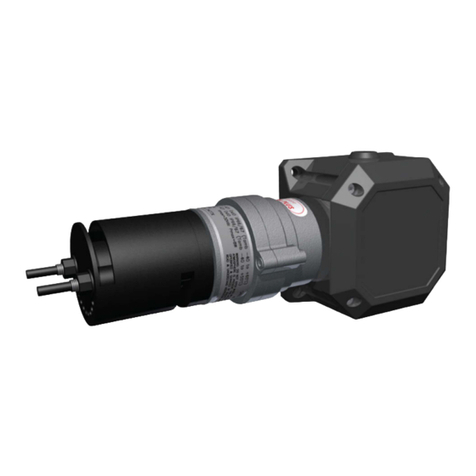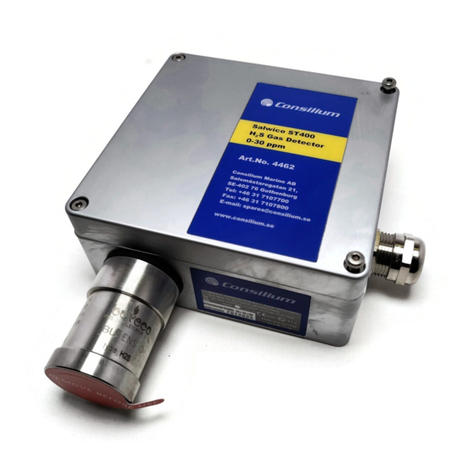
Salwico GD Technical Manual 5100516-00A Rev:A01
2
1 Safety
Ensure that this Operating Manual is read and understood BEFORE installing / operating /
maintaining the equipment. Pay particular attention to Warnings and Cautions. All document
Warnings are listed here and repeated where appropriate at the start of the relevant chapter(s) of
this Operating Manual. Cautions appear in the sections/sub-sections of the document where they
apply.
WARNINGS
Salwico GD is designed for installation and use in Zone 1 or 2 hazardous areas in
many countries including Europe and for Class 1 Division 1 or 2 area applications in
North America.
Installation must be in accordance with the recognized standards of the appropriate authority in the
country concerned.
Access to the interior of the detector, when carrying out any work, must only be conducted by trained
personnel.
Before carrying out any work ensure local regulations and site procedures are followed. Appropriate
standards must be followed to maintain the overall certication of the detector.
For installations where conduit is used, and the sensor is mounted directly to the Salwico GD, there
must be a “Seal Fitting” installed for each of the cable gland entries within 18 inches of the
Salwico GD. The total distance of the location of these Seal Fittings is 18 inches. (e.g. If all 3 gland
entries are to be used, 3 Seal Fittings should be located, each within 6 inches of the wiring entrance).
In order to maintain electrical safety, the product must not be operated in atmospheres with more than
21% oxygen. Oxygen decient atmospheres (Combustible: less than 10%V/V, Toxic: less than 6%V/V)
may suppress the sensor output.
If using an anti-seize compound, the threads should be thinly coated with an approved silicone free
compound e.g. petroleum jelly
To reduce the risk of ignition of hazardous atmosphere, de-classify the area or disconnect the
equipment from the supply circuit before opening the detector enclosure. Keep assembly tightly
closed during operation.
Never attempt to open a junction box/enclosure or replace/ret the sensor in potentially hazardous
atmospheres while power is still applied to the transmitter.
The detector must be earthed/grounded for electrical safety and to limit the effects of radio frequency
interference. Earth/ground points are provided inside and outside the unit. The internal grounding
shall be used as the primary equipment ground. The external terminal is only a supplemental bonding
connection where local authorities permit or require such a connection.
Ensure that all screens/instrument earth/clean earth wiring is earthed/grounded at a single point (either
at the controller or detector - BUT NOT BOTH) to prevent false readings or alarms that may occur due
to potential earth/ground loops.
Take care when handling sensors as they may contain corrosive solutions.
Do not tamper with or in any way disassemble the sensor.
Do not expose to temperatures outside the recommended ranges.
Do not expose sensors under storage conditions to organic solvents or ammable liquids.
At the end of their working life, replacement electrochemical sensors for oxygen and toxic gas must
be disposed of in an environmentally safe manner. Disposal should be according to local waste
management requirements and environmental legislation.
Alternatively, old replaceable sensors may be securely packaged and returned to Consilium clearly
marked for environmental disposal.
Electrochemical sensors should NOT be incinerated as this action may cause the cell to emit toxic
fumes.
Refer to the local or national regulations relative to the installation at the site. For Europe see
EN60079-29-2, EN60079-14, EN45544-4 and EN61241-14.
This equipment is designed and constructed as to prevent ignition sources arising, even in the event
of frequent disturbances or equipment operating faults.
The sensor head must be tted with the supplied weather protection, and mounted so that the sinter
is pointing downward to provide ingress protection IPX6.
The weather protection is a potential electrostatic charging hazard. The manufacturer’s instructions
should be observed.
NOTE: The control card must have a suitably rated fuse.

































